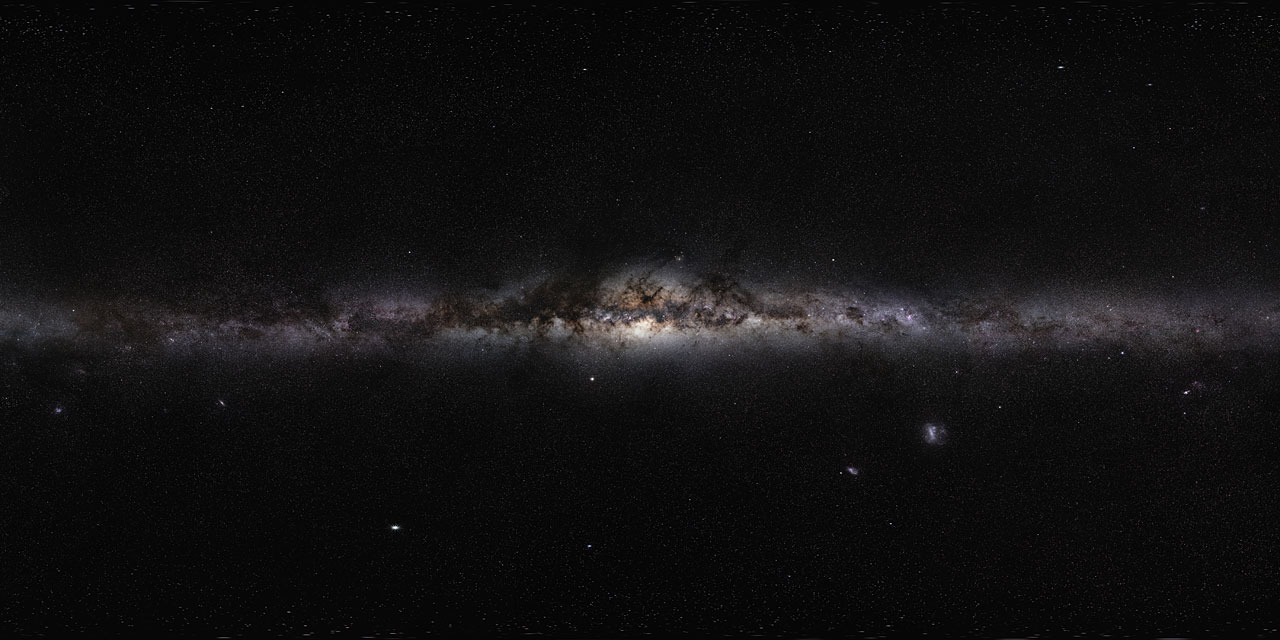Supernova Exhibition Panels and Kiosks
We have several kiosks that update continuously.- Point a computer with a fullscreen Chrome browser to the URL
- Have a screen preferably running 1080p
- Allow some time for downloading the assets when it starts
01) Astronomy — What is astronomy?
Astronomy is the study of the vast and wonderful Universe that we live in. It provides us with a humble look at ourselves and at our place in space and time.
- 0103 From Munich to the galaxies (Image)
- 0104 Why do we study the Universe? (Panel)
- 0105 How does astronomy work? (Panel)
- 0106 What is our place in the Universe? (Panel)
- 0106 Our place in the Universe? (Touch)
- 0107 How did ancient civilisations view the sky? (Panel)
- 0107 Astronomy and civilisation (Touch)
- 0108 What are astronomy's technological spin-offs? (Panel)
- 0109 How does astronomy affect society? (Panel)
- 0112 Grasp the Milky Way (Image)
- 0113 The view from below (Panel)
- 0114 Lights near and far (Panel)

Credit: NASA, ESA, Harald Ebeling(University of Hawaii at Manoa) & Jean-Paul Kneib (LAM)
02) Earth, Moon & Sun — Why is the Earth special?
The Earth is the only planet that we know to harbour life. Its large Moon and its motion around the Sun at just the right distance make the Earth the comfortable place for life that it is.
- 0201 The Eagle has landed! (Screen)
- 0203 What causes day and night? (Panel)
- 0204 Why do we have seasons? (Panel)
- 0205 What do we know about the Moon? (Panel)
- 0206 Why do we see different phases of the moon? (Panel)
- 0207 How are tides produced? (Panel)
- 0208 How did the Moon form? (Panel)
- 0209 What makes the Earth suitable for life? (Panel)
- 0210 Could we live without the Moon and a magnetic field? (Panel)
- 0214 Want to know more about Earth and Moon? (Touch)
- 0215 The far side (Image)
- 0216 Moon over the Atacama (Image)
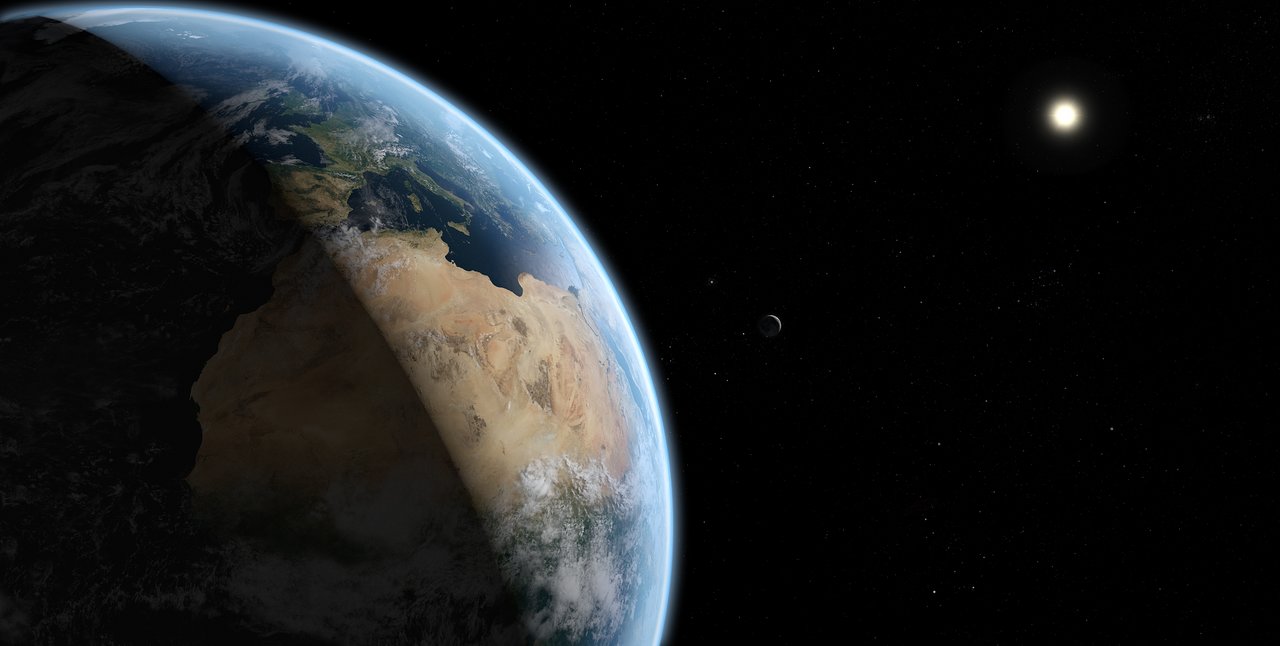
Credit: ESO/M. Kornmesser
03) The Solar System — Is the Earth Unique?
The Earth is one of eight planets orbiting the Sun. But the Solar System also contains moons, asteroids, dwarf planets and comets. Is the Earth the only one among all these worlds that supports life?
- 0301 What's in our Solar System? (Panel)
- 0302 How do planets move? (Panel)
- 0303 What is the Sun? (Panel)
- 0304 What is a planet? (Panel)
- 0306 How hot is it on Mercury? (Touch)
- 0307 What is hiding under the clouds of Venus? (Touch)
- 0308 How did Earth become the blue planet? (Touch)
- 0309 Is there life on Mars? (Touch)
- 0310 Could there be life beyond Earth? (Panel)
- 0311 What is the difference between asteroids and comets? (Touch)
- 0313 How is Jupiter protecting us? (Touch)
- 0314 What are Saturn's rings made of? (Touch)
- 0316 Why is Uranus tilted? (Touch)
- 0318 Why is Neptune blue? (Touch)
- 0319 Where does the Solar System end? (Panel)
- 0320 What about Pluto? (Touch)
- 0321 Want to know more about the Solar System? (Touch)

Credit: The International Astronomical Union/Martin Kornmesser
04) Stars — How do stars form, live and die?
Stars don’t live forever. They are born from cosmic gas clouds, and may live for billions of years. But in the end they die — as fading dwarfs, or in titanic supernova explosions. Astronomers have unravelled the stories of their lives.
- 0401 What are stars? (Panel)
- 0403 What is the story of the Sun’s life? (Panel)
- 0404 How far away are the stars? (Panel)
- 0404 How far away are the stars? (Touch)
- 0405 What makes a star shine? (Panel)
- 0406 What's inside a star? (Panel)
- 0407 Are we made of starstuff? (Panel)
- 0407 How are the elements produced? (Touch)
- 0408 How are stars born? (Panel)
- 0409 How do stars evolve? (Panel)
- 0409 How important is mass? (Touch)
- 0410 Can stars change their brightness? (Panel)
- 0411 How do stars like the Sun die? (Panel)
- 0411 Look at astronomical nebulae! (Touch)
- 0412 How do stars explode? (Panel)
- 0414 What are black holes? (Panel)
- 0418 Do you want to know more about stars? (Touch)
- 0419 Stellar Nursery (Image)
- 0427 Of cats and lobsters (Image)
- 0421 Swan lake (Image)
- 0422 Happy birthday, Hubble! (Image)
- 0423 Stellar shroud (Image)
- 0424 Spawning stars (Image)
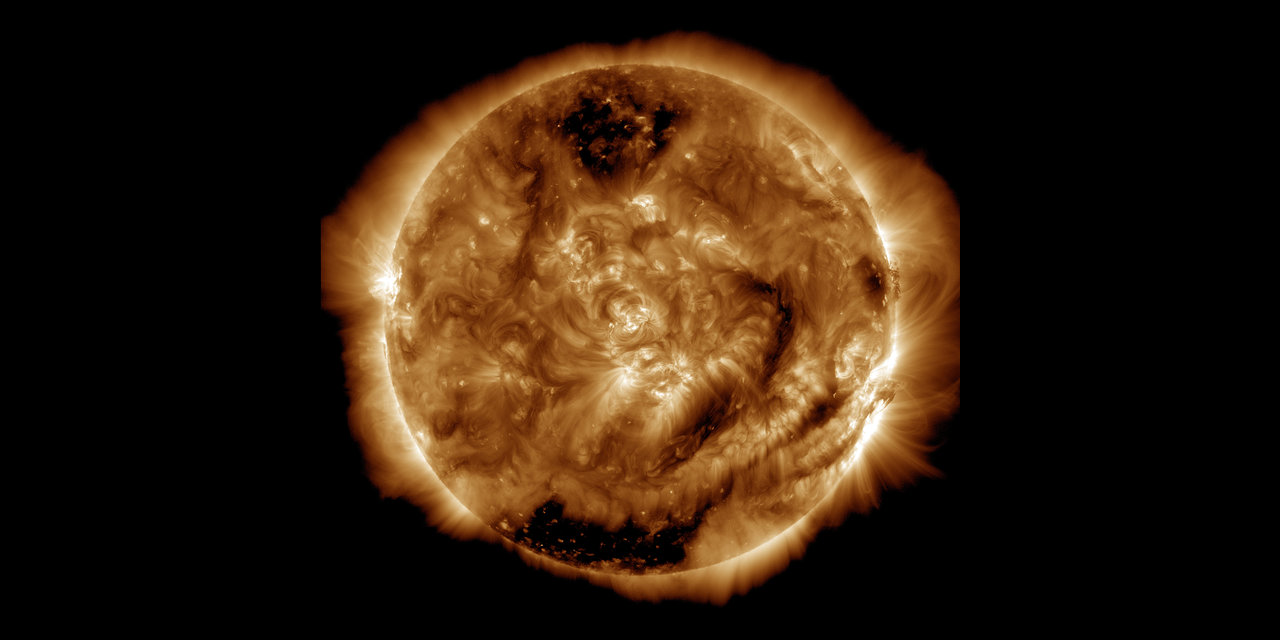
Credit: NASA/SDO/AIA/LMSAL
05) Exoplanets — Are we alone?
The Earth is a living planet. Other stars have planets, too. Do they also harbour life? And how can we find out?
- 0501 What is an Exoplanet? (Panel)
- 0502 What kind of exoplanets are out there? (Panel)
- 0502 Which exoplanets are out there? (Touch)
- 0503 Do exoplanets have names? (Panel)
- 0503 How do exoplanets get their names? (Touch)
- 0504 Which stars have planets? (Panel)
- 0505 How are planets born? (Panel)
- 0507 How do planets form? (Panel)
- 0508 Can we see exoplanets? (Panel)
- 0509 How are exoplanets discovered? (Panel)
- 0509 How do we find exoplanets? (Touch)
- 0511 Which telescopes are on the hunt for exoplanets? (Panel)
- 0511 Which are the most famous exoplanet hunters? (Touch)
- 0512 Which planets can harbour life? (Panel)
- 0513 Can we breathe an exoplanet's atmosphere? (Panel)
- 0514 Where can life exist on Earth? (Panel)
- 0515 How common are the building blocks of life? (Panel)
- 0516 Are we alone? (Panel)
- 0517 TRAPPIST-1 and its three planets (Image)
- 0519 Do you want to know more about exoplanets? (Touch)
- 0520 Our closest neighbour (Image)
- 0522 Look, exoplanets! (Touch)
- 0523 What do exoplanets look like? (Panel)
- 0524 Can we visit exoplanets? (Panel)
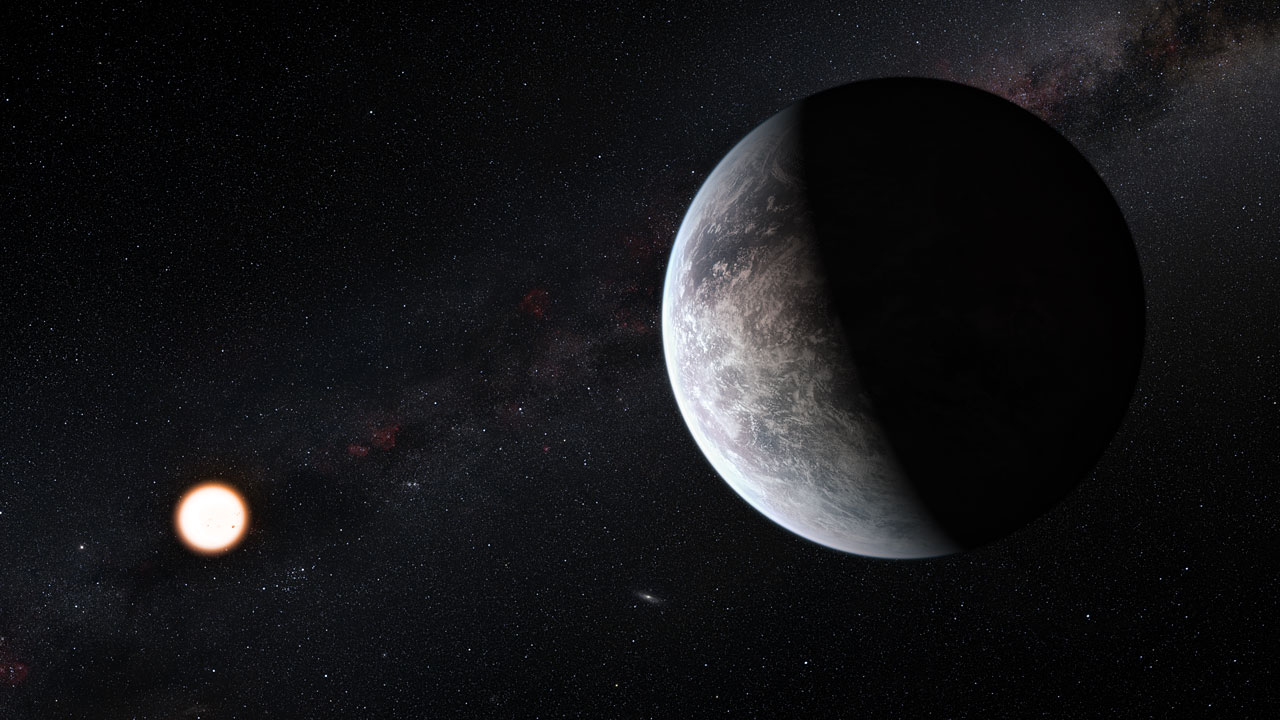
Credit: ESO/M. Kornmesser
06) ESO — What is ESO?
The European Southern Observatory (ESO) plays a leading role in ground-based astronomy. How did it develop? And what is so special about Chile?
- 0601 What is the European Southern Observatory? (Panel)
- 0602 Which countries belong to ESO? (Panel)
- 0602 What is the contribution of the member states? (Touch)
- 0603 How did it all start? (Panel)
- 0604 How is ESO run? (Panel)
- 0604 Who are ESO's Directors General? (Touch)
- 0605 What are ESO's biggest discoveries? (Panel)
- 0605 What are ESO's biggest discoveries? (Touch)
- 0606 Why are ESO’s observatories in Chile? (Panel)
- 0607 How can we live in the Atacama Desert? (Panel)
- 0608 Why did James Bond visit ESO? (Panel)
- 0611a Life and Leisure at Paranal (Screen)
- 0611b Observing at the VLT (Screen)
- 0611c ESO People at Work and Play (Screen)
- 0612 Night over the Atacama (Image)
- 0613 Do you want to know more about ESO? (Touch)
- 0615 Bright Night (Image)
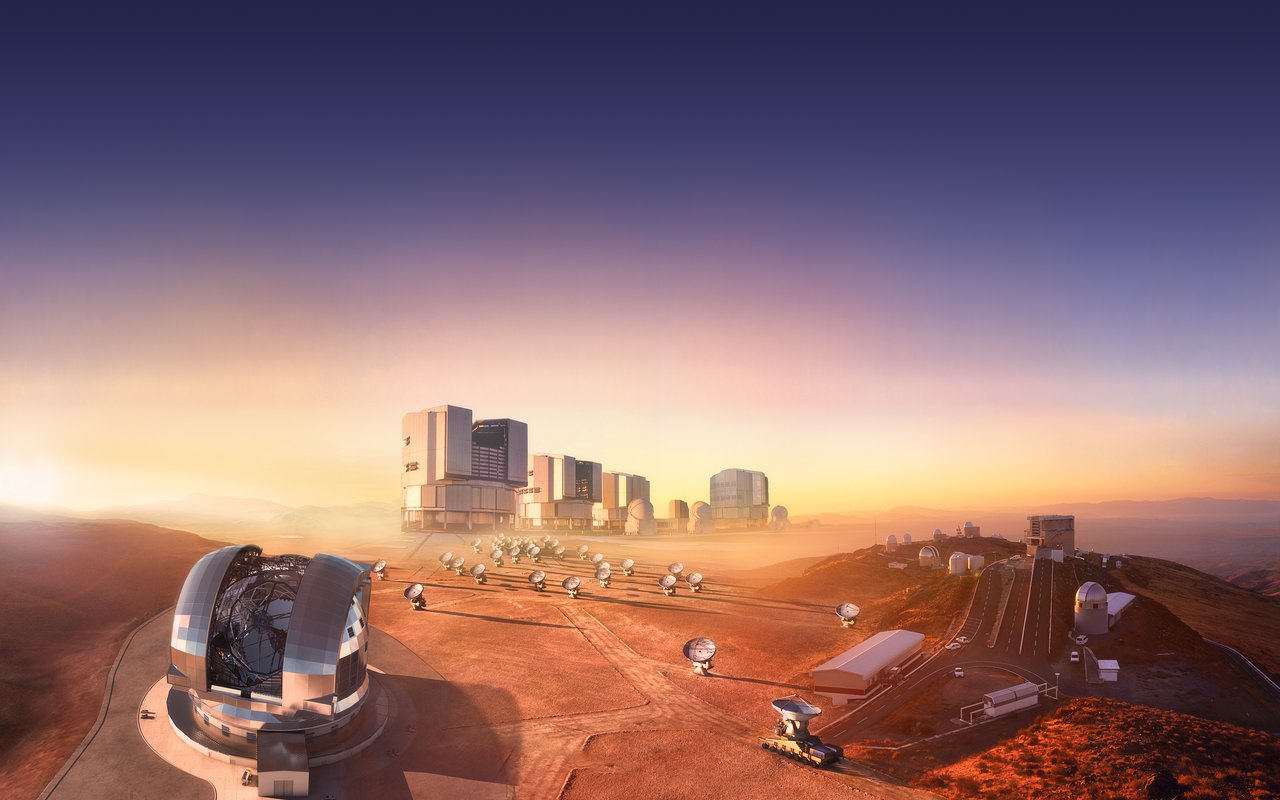
Credit: ESO/M. Kornmesser
07) Discovery machines — What’s new at ESO’s big observatories?
At La Silla, Paranal and the Chajnantor plateau, ESO’s large telescopes and sophisticated instruments team up to unravel cosmic mysteries.
- 0703 What is La Silla? (Screen)
- 0703 La Sillay (Image)
- 0704 What is the VLT? (Screen)
- 0704 Paranal (Image)
- 0705 What is ALMA? (Screen)
- 0705 ALMA and the centre of the Milky Way (Image)
- 0706 Control room - VST observations Live (Screen)
- 0706 Control room - Weather satellite (Screen)
- Control room - 0706 Wind and Seeing at Paranal (Screen)
- 0706 Control room - Data reduction (Screen)
- 0706 Control room - Points of interest (Screen)
- 0706 Control room - Virtual Tour Paranal (Screen)
- 0706 Control room - Virtual Tour ALMA (Screen)
- 0707 Panorama at Chajnantor (Image)
- 0709 Atacama Desert (Image)
- 0710 Do you want to know more about ESO's observatories? (Touch)

Credit: ESO/B. Tafreshi (twanight.org)
08) Technology — How do astronomers study starlight?
Ever since the invention of the telescope in 1608, astronomers have built larger instruments and improved the technology. The study of the Universe has become a high-tech endeavour.
- 0801 What is light? (Panel)
- 0802 Lens or mirror? (Panel)
- 0802 What's the advantage of mirrors? (Touch)
- 0803 How does a telescope work? (Panel)
- 0805 What if the human eye isn't good enough? (Panel)
- 0806 Why do we need filters? (Panel)
- 0808-2 What does the infrared unveil? (Panel)
- 0808-1 What does the ultraviolet unveil? (Panel)
- 0808-3 How do we see invisible light? (Panel)
- 0809 Carinanebel (Wandbild)
- 0810 Can we listen to the Universe? (Panel)
- 0811-1 What does the X-ray Universe look like? (Panel)
- 0811-2 How do astronomers see X-rays? (Panel)
- 0812 How do we detect particles from space? (Panel)
- 0813-1 Why do we launch telescopes into space? (Panel)
- 0813 Which space telescopes are there? (Touch)
- 0814 What about Hubble? (Panel)
- 0814 What's so special about Hubble and James Webb? (Touch)
- 0815-1 How are rainbows and spectroscopy connected? (Panel)
- 0815-2 How powerful is spectroscopy? (Panel)
- 0815 How does spectroscopy work? (Touch)
- 0818 How do astronomers "untwinkle" the stars? (Panel)
- 0818 How do astronomers "untwinkle" the stars? (Touch)
- 0819 How do telescopes work together? (Panel)
- 0819 How does interferometry work? (Touch)
- 0825 Do you want to know more about technology? (Touch)
- 0827 Farbkombinationen (Wandbild)
- 0828 Das Unsichtbare sichtbar gemacht (Wandbild)
- 0830 Das VLTI-Labor (Wandbild)
- 0831 Technologisches Wunder (Wandbild)
- 0832 Ausgerichtet zum Sonnenuntergang (Wandbild)
- 0833 Röntgenblick (Wandbild)
- 0834 Vierfache Kraft (Panel)

Credit: ESO/M. Kornmesser
09) ELT — What is the ELT?
In their never-ending quest for a better view of the Universe, ESO astronomers and engineers are now constructing the Extremely Large Telescope. With its 39-metre primary mirror, the ELT will be by far the largest optical telescope ever built.
- 0901 What is the ELT? (Panel)
- 0902 When will the ELT be ready? (Panel)
- 0902 What are the ELT milestones? (Touch)
- 0903 What will the ELT tell us? (Panel)
- 0904 How do you build a 39-metre mirror? (Panel)
- 0906 Armazones and supermoon (Image)
- 0909 All the way around Armazones (Panel)
- 0909 ELT Live Webcam (Screen)
- 0910 Which instruments will the ELT use? (Panel)
- 0912 Are there other giant telescopes being planned? (Panel)
- 0913 Are there plans for even bigger telescopes? (Panel)
- 0915 Do you want to know more about the ELT? (Touch)
- 0917 Shooting stars (Image)
- 0919 Giant of the future (Image)

Credit: ESO
10) Galaxies — Is our Milky Way galaxy unique?
All the stars we see in the night sky are part of our home galaxy, the Milky Way. Trillions of other galaxies populate the Universe.
- 1001 What is a galaxy? (Panel)
- 1002 How do we know there are other galaxies? (Panel)
- 1003 What is our cosmic home? (Panel)
- 1004 What does the Milky Way look like? (Panel)
- 1008 What is the structure of the Milky Way? (Panel)
- 1008 What are the components of the Milky Way? (Touch)
- 1009 What's between the stars? (Panel)
- 1010 What lurks at the centre of the Milky Way? (Panel)
- 1011 Where is life possible in the Milky Way? (Panel)
- 1012 Nine-billion-pixel Milky Way (Image)
- 1013 How do black holes power quasars? (Panel)
- 1014 What shapes do galaxies have? (Panel)
- 1015 What are the differences between galaxies? (Panel)
- 1015 What types of galaxies exist? (Touch)
- 1017 Galactic census (Image)
- 1018 How do galaxies evolve? (Panel)
- 1018 What drives galaxy evolution? (Touch)
- 1019 Do galaxies change their composition? (Panel)
- 1020 How are galaxies distributed in space? (Panel)
- 1020 Are there larger structures than galaxies? (Touch)
- 1021 What is a gravitational lens? (Panel)
- 1021 How does gravitational lensing work? (Touch)
- 1024 Classify galaxies! (Touch)
- 1025 Do you want to know more about galaxies? (Touch)
- 1027 Home galaxy (Image)
- 1028 Destruction and creation (Image)
- 1029 Beautiful Andromeda Galaxy (Image)
- 1030 Distorted view (Image)
- 1031 Going the distance (Image)
- 1032 Spiral beauty (Image)
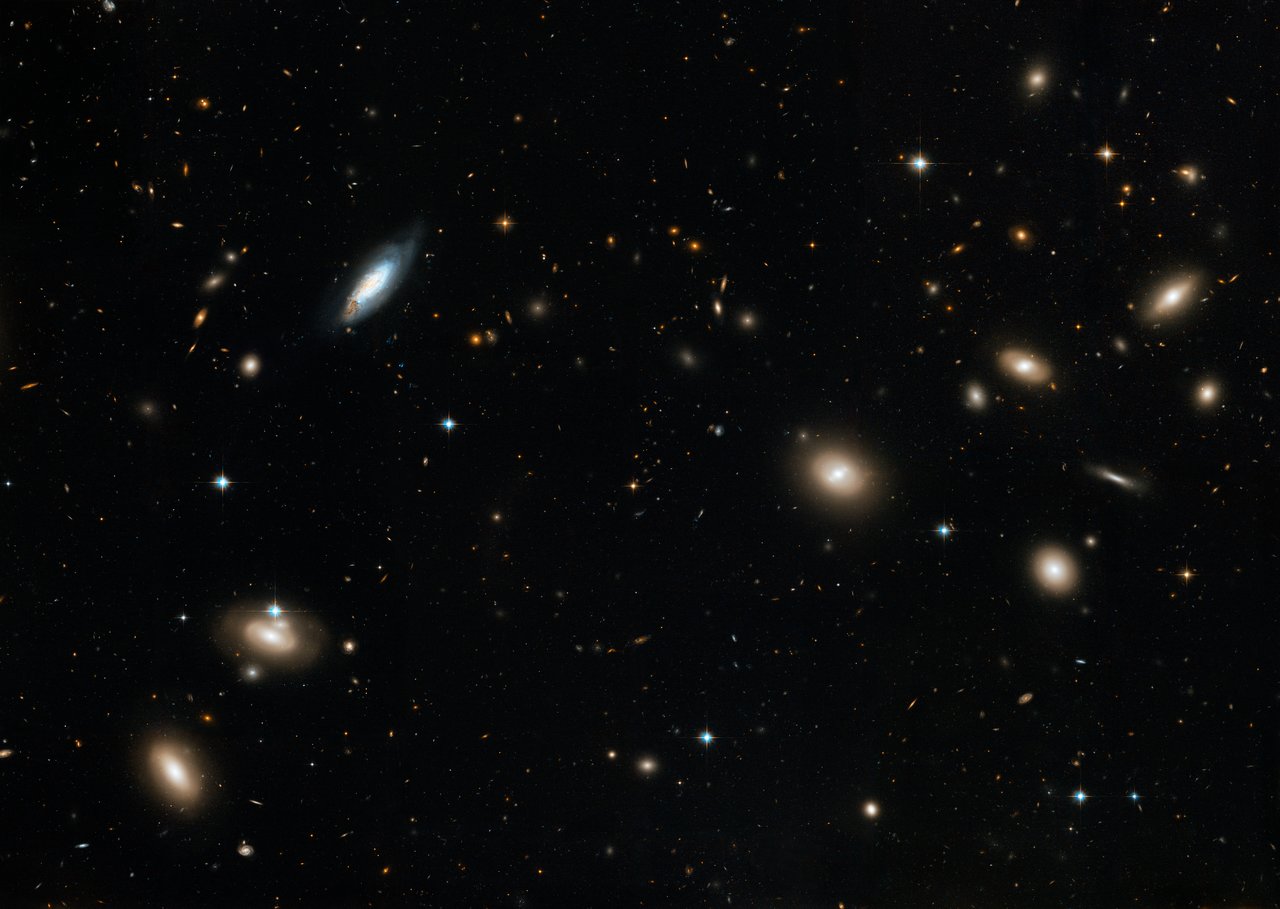
Credit: NASA, ESA, and the Hubble Heritage Team (STScI/AURA).
Acknowledgment: D. Carter (Liverpool John Moores University) and the Coma HST ACS Treasury Team.
11) Cosmology — Where did we come from, and where are we going?
13.8 billion years ago, the Universe was born in the Big Bang. It has been expanding ever since, giving birth to galaxies, stars, planets, and life. While we know a lot of its past, its distant future is uncertain.
- 1101 History of the Universe (Image)
- 1102 How did the Universe begin? (Panel)
- 1102 What do we know about the Big Bang? (Touch)
- 1103 How did the Universe grow so fast? (Panel)
- 1104 How did the first elements form? (Panel)
- 1105 Can we see the Big Bang’s afterglow? (Panel)
- 1105 Hints about the Big Bang (Image)
- 1106 When did the Universe start to shine? (Panel)
- 1107 When did the first stars form? (Panel)
- 1108 When did the Solar System form? (Panel)
- 1109 How will the Universe end? (Panel)
- 1110 Where are we in time? (Image)
- 1111 How do astronomers measure distances? (Panel)
- 1111 What are cosmic measuring tapes? (Touch)
- 1112 What are the fundamentals of our Universe? (Panel)
- 1113 Simulating the Cosmos (Image)
- 1114 What is the Universe made of? (Panel)
- 1117 Where is the centre of the Universe? (Panel)
- 1120 Want to know more about cosmology? (Touch)
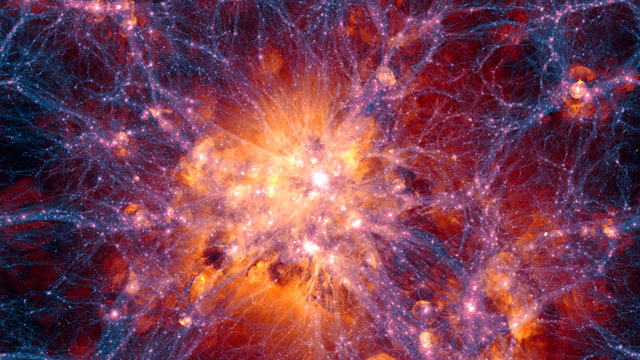
Credit: Illustris Collaboration
12) Cosmic mysteries and threats — What are the great unknowns?
We have learned a lot about the cosmos, but many mysteries remain unsolved. One of them is whether — and how — life on Earth will be able to cope with threats from space.
- 1201 Faster than light (Image)
- 1202 What do we know about the dark universe? (Panel)
- 1204 What is antimatter? (Panel)
- 1205 What happens if you fall into a black hole? (Panel)
- 1208 How familiar would alien life be? (Panel)
- 1209 Do wormholes exist? (Panel)
- 1210 Is there only one Universe? (Panel)
- 1214 Can asteroids wipe out life? (Panel)
- 1215 What will happen when the Sun dies? (Panel)
- 1217 Could a gamma-ray burst kill off life on Earth? (Panel)
- 1218 How dangerous are supernova explosions? (Panel)
- 1219 Could the Earth be swallowed by a black hole? (Panel)
- 1220 Could we survive the end of the Universe? (Panel)
- 1221 Will life on Earth survive Homo Sapiens? (Panel)
- 1223 Do you want to know more about cosmic mysteries? (Touch)
- 1224 What are gravitational waves? (Panel)
- 1225 Hidden monster (Panel)
- 1226 Goodbye! (Panel)
- 1227 Space sugar (Image)
- 1228 Glimpse into the future (Image)
- 1229 Stellar gamma-ray bursts (Image)
- 1230 Constant bombardment (Image)
- 1231 Expanding shockwave (Image)

Credit: NASA, ESA, Harald Ebeling (University of Hawaii at Manoa) & Jean-Paul Kneib (LAM)
